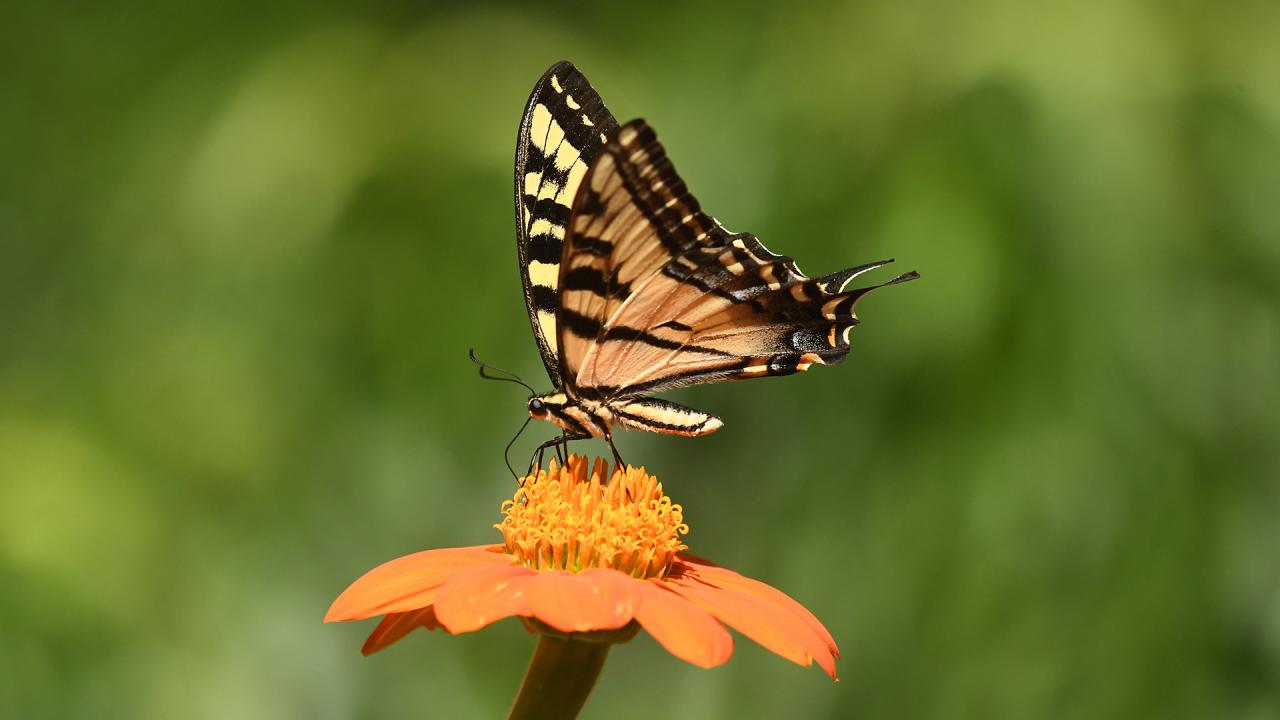Summer is peak butterfly season, but this year many noticed not as many as usual — and that’s due to a decline that’s been in effect for some time.
Contributing factors to this decline include the effects of climate change, land use alterations and agricultural pesticides. A recent study performed in dozens of counties across five states showed an 8% decline in butterflies in fields treated with pesticides, with monarchs declining 33%.
Many researchers are now trying to answer the existential question, can butterflies be saved from extinction?
Thankfully, a new study shows the short answer is yes — if we understand and create environments that help them thrive.
The study, published in the Journal of Applied Ecology, analyzed 114 butterfly populations of 31 at-risk species from five families in 10 states to determine how climate change impacts at-risk species, and the ways managed environments can benefit at-risk species. One key result was that good local habitat management can make up for some effects of global climate change.
One of the study’s authors is Elizabeth Crone, professor of evolution and ecology at UC Davis. Crone is a population ecologist who combines field research with lab analysis to study butterflies, bees and wildflowers.
Butterflies get their food from eating plant leaves as caterpillars, and from drinking nectar from flowers as adults. Habitat can partly make up for the effects of climate change because, when butterflies have better diets, they can tolerate a broader range of climate conditions. Habitat can also allow species to move through the landscape to new, and more suitable, climate regions.
Anyone can create butterfly habitat in their yard. Crone is an advocate of developing gardens full of plants that develop pollen and nectar, whether purely decorative flowers or those also growing fruits and veggies. “I don't think gardens should be super high tech or a high barrier of entry that you have to recreate natural habitat,” Crone said. “A good first step is to find pretty flowers and plant them. A good second step is to minimize use of insecticides around your home and garden.”
Want to start a garden but don’t know what to plant? Check out evolution and ecology professor Arthur Shapiro’s resource for butterfly-friendly plants in the Sacramento Valley. The UC Davis Arboretum also provides garden plans.
One of Crone’s favorite parts of her job is her research group, the Cronies, which studies population dynamics between insects, plants and likeminded species. The Crone Lab includes graduate students, postdocs and undergraduate research students. Students have their own projects and collaborate with Crone executing them.
“It keeps me energized and feeling positive, I like to help them figure out what they're interested in,” Crone said. “My goal is when they finish, they are the world leader on their topic.”
Crone is continuing her pollinator research, particularly around California’s unique climate, and the ways in which they are affected by climate change.
“In California, the growing season ends because it gets dry, not because it gets cold,” Crone explained.
This could lead to environments that support populations of native bees and butterflies year-round, but Crone warns there’s still much to study and better understand.
“I am really curious about what it means that we can now have an almost year-round growing season in irrigated gardens in Northern or Southern California,” she said. “People might fundamentally change the dynamics of ecological systems by irrigating and planting plants that flower throughout the growing season.”
